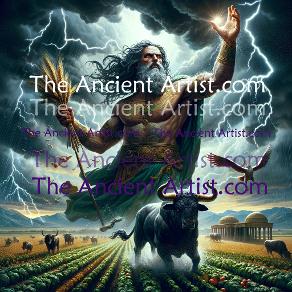Ancient Deities

Phoenican God Baal
Creating an image of an ancient deity presents a fascinating blend of artistic, cultural, and research challenges that artists and creators must navigate.
These challenges stem from the need to honor historical accuracy, cultural significance, and the mystical aura that surrounds these divine figures, while also bringing a unique creative vision to the depiction.
While Ancient Deities are for the most part, personified with the characteristics of mankind, their god like aspects must come across in the visual representation. There is no question that the deity on the left holds dominion over the seas and is possessed of a power that is ancient and irrefutable...he is a god!
The significance of such representations is that there are stories, myths and legends that have been told about the ancient ones that speak of great feats, battles, events that only the gods are capable of. When we look at an image of one of these deities it is important that they look the part. When we look at the image we must
Baal, a major god in the Phoenician and Canaanite pantheons, is associated with storms, fertility, and agriculture. The name "Baal" itself means "lord" or "master" and was used to refer to several gods in the ancient Near East. The most well-known Baal is Baal Hadad, the storm and rain god, who was worshipped extensively in the region of Ugarit, Tyre, and Carthage. Key myths involving Baal include his battles against Yam, the sea god, and Mot, the god of death, symbolizing the cyclical nature of seasons and agricultural fertility.
Role with Regard to Humanity: Baal interacts with humans as a bringer of rain and fertility, crucial for agriculture and human survival in the ancient Near East. He is often considered a protector of crops and livestock, ensuring the prosperity of those who worshipped him.